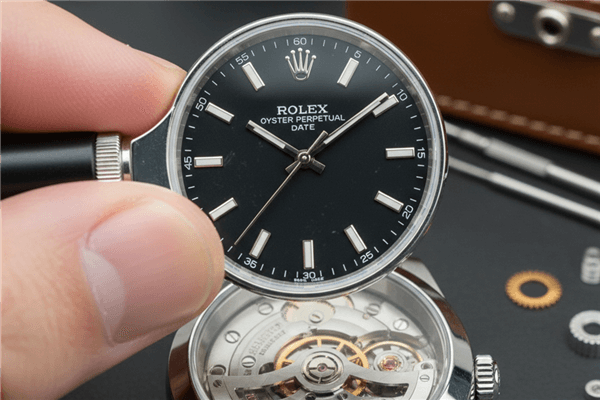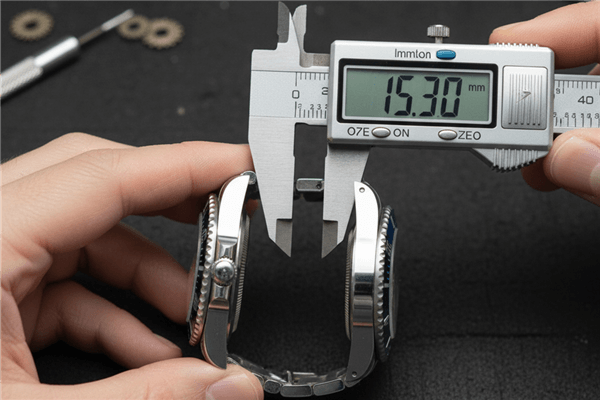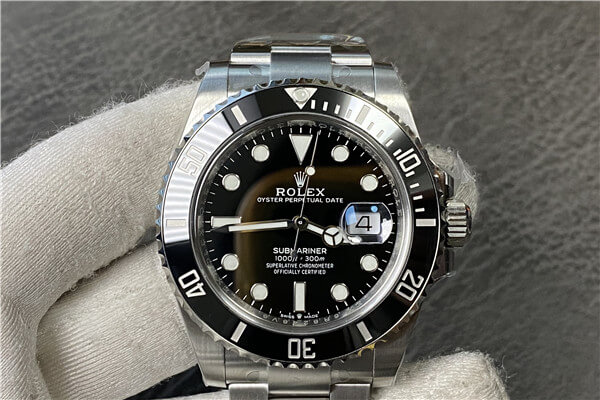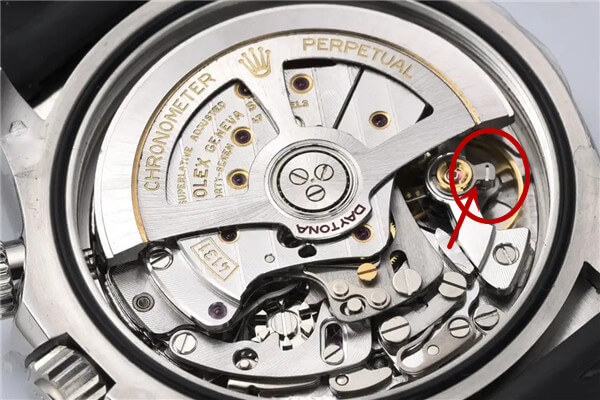Are you worried about buying a fake watch disguised as real? High-end fakes can fool almost anyone, making it easy to overpay for something that isn't genuine.
For most brands, you can spot fakes by checking weight, finishing, and movement details. For the best replicas, like a Rolex Super Clone1, the most definitive way to tell is by examining the movement for specific differences, which are invisible from the outside.

With replicas getting better every year, telling them apart from the real deal is a real challenge. You can't just glance at the dial anymore. But don't worry. As a dealer with over ten years of experience, I inspect watches all day, every day. I'm going to walk you through the process, from the easy giveaways on average fakes to the professional tricks for spotting even the best ones.
Are Most Fake Watches Easy to Spot?
Think all fakes have misspelled words and cheap parts? Many do, but some look good at first glance, making you second-guess what you're seeing.
Yes, most fakes outside of the top-tier Rolex world are relatively easy to spot if you know where to look. Immediate red flags include incorrect weight, wrong case thickness, a stuttering second hand2, and a poorly decorated movement that doesn't match the genuine model.

Based on my experience, unless you are dealing with a top-tier Rolex replica, you can often identify a fake with a quick physical inspection, no tools required. Most replica factories3 cut corners on brands that have less demand, and these shortcuts are easy to notice once you're trained to find them. They focus on the general look but fail on the small details that create the feeling of luxury.
The Common Giveaways
For most non-Rolex brands, and for lower-grade fakes in general, several signs will immediately give the watch away.
- The Weight and Feel: Genuine watches made from stainless steel, gold, or platinum have a certain density and heft. Most fakes use cheaper steel or alloys, making them feel noticeably lighter and less substantial in your hand.
- Case Thickness: This is a huge tell for many brands. To save money, factories use generic clone movements4 that are not 1:1 copies. These movements are often thicker than the real ones, which forces the replica to have a thicker case profile that doesn't match the genuine watch's elegant proportions.
- The Second Hand Sweep: A genuine luxury mechanical watch has a high-beat movement, causing the second hand to sweep smoothly. A cheap mechanical fake often uses a low-beat movement, resulting in a jerky, stuttering sweep. And of course, if it "ticks" once per second, it's a dead giveaway of a cheap quartz movement.
| Flaw | What to Look For | Why it Happens |
|---|---|---|
| Weight | The watch feels too light. | Use of cheaper, less dense metal alloys. |
| Thickness | The case is visibly thicker than genuine photos. | Non-identical movement requires a bulkier case. |
| Second Hand | The sweep is stuttery or ticks once per second. | Use of a low-beat or cheap quartz movement. |
| Movement | Rotor or plates look cheap or incorrect. | Factories use a generic decorated movement, not a true clone. |
Why Are Rolex Replicas So Hard to Authenticate?
You've heard that top-tier Rolex fakes are "identical." This reputation makes people either overconfident in fakes or overly paranoid when buying a used, real one.
It's because the best factories have perfected the external details to a 1:1 level. They use the same 904L steel, CNC machining, and high-quality sapphire as Rolex. From the outside, without a jeweler's loupe and an expert eye, they are visually indistinguishable to most people.

From my position in the industry, I can tell you that Rolex replicas receive the most investment and research from the top factories. This is simply a matter of demand. Because Rolex is the most popular brand, factories can justify spending huge amounts of money to buy genuine watches, disassemble them, and replicate every single part. For other brands, the return on investment just isn't there, so they don't achieve the same level of accuracy. This obsessive dedication to replicating Rolex has created a "Super Clone" tier that is truly in a class of its own.
The Pursuit of 1:1 Perfection
This isn't about just looking similar; it's about being identical in every measurable way on the outside.
- Materials: Top factories like Clean or VS Factory use 904L stainless steel, just like Rolex. It has a specific weight and shine that cheaper 316L steel can't quite match. They also perfectly replicate the ceramic bezels and sapphire crystals, right down to the anti-reflective coating5 on the date cyclops.
- Manufacturing: These watches are not made from simple molds. They are made with CNC machines that carve the case from a solid block of steel, just like the Swiss do. This allows for incredibly sharp lines, perfect bevels, and flawless polishing.
- Dial Details: Every detail on the dial—the font used for the text, the precise shape and length of the hands, the placement of the hour markers, the color of the lume—is copied perfectly. This is why, without a 10x magnifying loupe, even experienced people can be fooled.
What's the Ultimate Tell-Tale Sign on a Clone Rolex Movement?
You have a perfect-looking Rolex, and the exterior is flawless. Opening the case back seems daunting, but that's where the final truth lies.
The ultimate tell is found in the movement's regulation system. A genuine Rolex 4130 movement uses Microstella screws6 on the balance wheel to adjust timing. The best clone movements4 still use a standard regulator lever, which is an immediate and definitive giveaway.

After all my years in this business, this is the one trick that has never failed me. Even if a clone factory gets 99% of the movement decoration right, they cannot perfectly replicate Rolex's proprietary regulation system at a low cost. This single detail is where authenticity is proven or disproven. Let's use the Daytona's 4130 movement as the perfect example, as the clones for it are famously good.
Microstella Screws vs. The Regulator Lever
To regulate a watch means to adjust its timing to make it run faster or slower.
- Genuine Rolex: Rolex uses a "free-sprung balance." Instead of a lever, the timing is adjusted by turning four tiny "Microstella" screws on the balance wheel itself. It is a more stable, shock-resistant, and precise system. Looking at it, you see a clean balance wheel with these four screws.
- Clone Movement: The best 4130 clones, like the Dandong 4130, are amazing pieces of engineering. But to control costs, they use a traditional regulator lever. This is a small needle-like pointer that changes the effective length of the hairspring. If you see this lever, you know it's a clone.
Another tiny detail is the center of the ruby jewels. In a genuine Rolex movement, the pivot point in the center of the jewel is visibly smooth and rounded. On a replica, this pivot point is often sharp like a pin or may not be visible at all.
| Feature | Genuine Rolex 4130 | Super Clone 4130 (Dandong) |
|---|---|---|
| Timing Regulation | Microstella Screws on a free-sprung balance. | A standard regulator lever. |
| Jewel Pivot | Smooth, rounded axle center visible. | Sharp, pin-like axle, or no visible center. |
Conclusion
Spotting most fakes is easy with practice. For the very best clones, like a top-tier Rolex, the truth is always hidden within the movement's tiny, mechanical details.
Explore this link to understand the intricacies of Rolex Super Clones and how to spot them. ↩
Discover the significance of a stuttering second hand and how it can reveal a fake watch. ↩
Learn about the processes used by replica factories to create convincing fake watches. ↩
Learn about clone movements and how they differ from genuine watch movements. ↩
Learn about anti-reflective coatings and their importance in luxury watch design. ↩
Explore the importance of Microstella screws in Rolex movements and their role in timing accuracy. ↩
